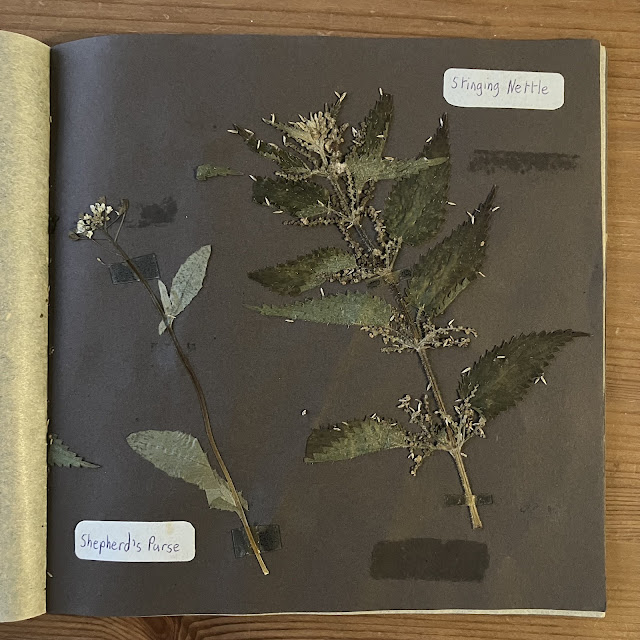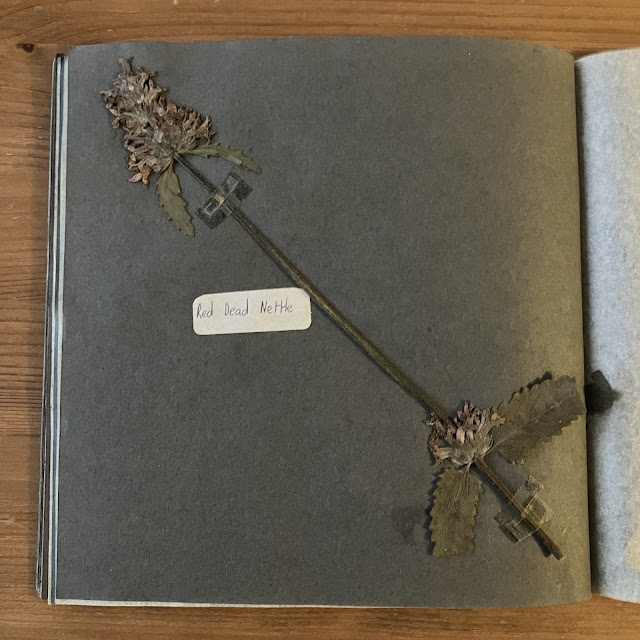Recently, whilst browsing through a box file of family history notes, I came across something which I thought had been lost forever, either to a house clearance, various down-sizings or maybe just one move too many. The fact that I had, over the years, occasionally asked family members about it, clearly showed I had absolutely no idea whatsoever as to its location.
Please do not worry, it is not some precious heirloom, well, not to the world at large, just to me.
So, Ladies and Gentlemen, I give you an old school project from when NaHaL wasn't so naturally high (tall). A snapshot of the wild (I hope) flora around me in the north east of England when I was a child.
By the early 1970s, my bit of County Durham was similar to the wider area, in coming to terms with the decline in heavy industry. Locally, this wasn't steel making or ship building, but in coal and clay mining and brick and pipe manufacture, as well as the eyesores of spoil heaps and disused industrial infrastructure. In hindsight, I guess the re-colonisation of these sites by Nature was something of a blessing, as agricultural intensification was now laying waste to unimproved meadows and hedges with the latter grubbed out to make way for larger fields and the land being drenched in all manner of agro-chemicals.
But in the final year of Junior School, I was blithely unaware of all this, and blissfully exploring the natural world around me. I didn't venture far, I didn't need to.
The 21st Century me can't guarantee the identification of these plants, as I suspect that at the time my mum helped a bit. And she may well have passed on to me her colloquial names for things, rather than anything the botanical community would use.
There are a few questions hanging in the air, though:
- What has happened to the Lesser Celandine? We should be told;
- Hmmm, Goldilocks? That looks a bit buttercup-like to me;
- The obviously missing caption should be, I think, Orange Hawkweed. Which is odd because, as seems likely, my lifelong love of Orange Hawkweed must date from this time. And nowadays I call it Fox and Cubs;
- There are a few obvious omissions, if memory serves, but that might be due to an earlier or later flowering period. For example, Great Mullein which probably only begins flowering in Summer. Plus, it would be a right pain trying to press a six foot high plant and fit it into a seven inch square notebook;
- So, Stinging Nettle but not one species of thistle?! Young NaHaL was obviously even more of a wimp than his older self;
- Was this the last time anyone, including me, could read my hand-writing?


















What a wonderfully nostalgic post, thoroughly enjoyed that. Shows that nature has always been in your heart.
ReplyDeleteAye, Nature caught me early and wouldn't let go.
ReplyDeleteWhat a treasure. I’m so pleased it finally was unearthed. I love finding pressed flowers in old books. I have a habit of pressing them and then forgetting all about them for many years. Maybe for 2025 you should do another book for your locality with your best handwriting of course and do a comparison! Happy New Year. B x
ReplyDeleteIt's certainly a thought , B, although some of the Orcadian flora is endemic and quite rare, so not sure I would dare remove a specimen!
DeleteWhat a serendipitous find, it's the best sort of treasure when something lost is found. And such painstaking work is most impressive from a young lad - is that partly why you remembered it existed?
ReplyDeleteDiscovering the wildflowers of Orkney was a big reminder, as I am sure that "my outdoors" as a lad will no longer be so diverse. Funnily enough, I think there were two collections, because shortly after starting secondary school, there was a biology project along the same lines.
ReplyDelete